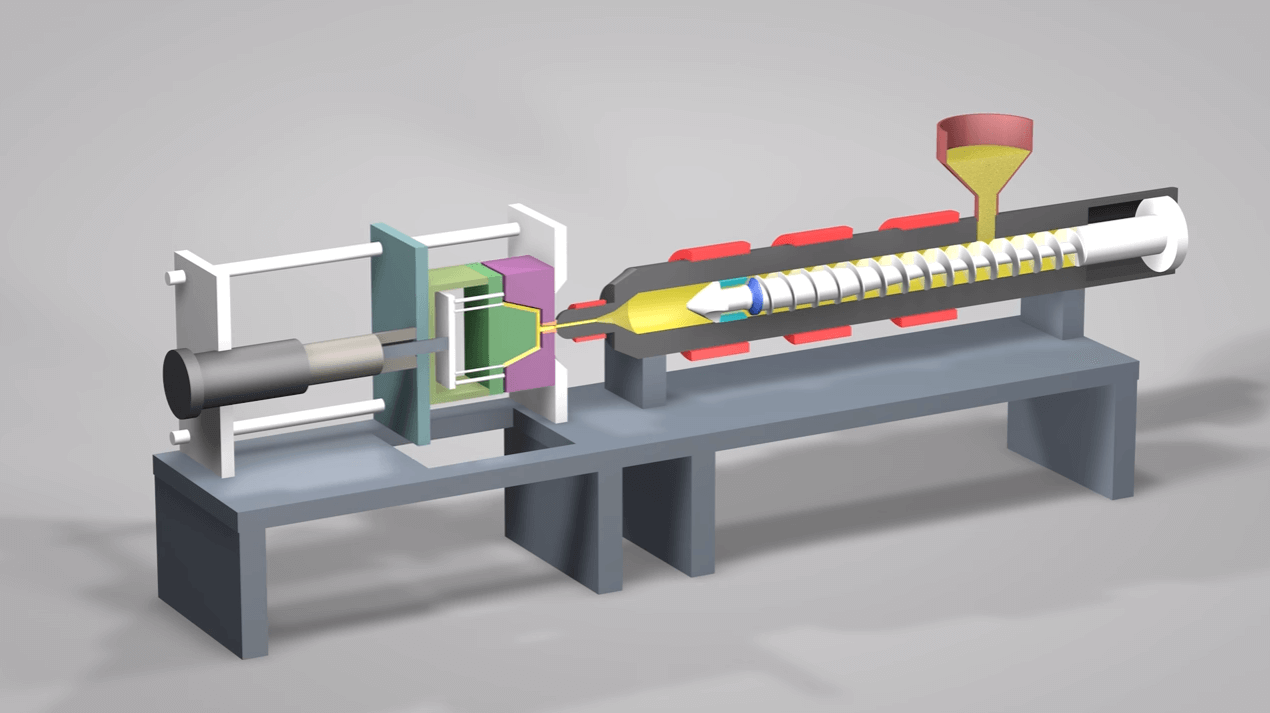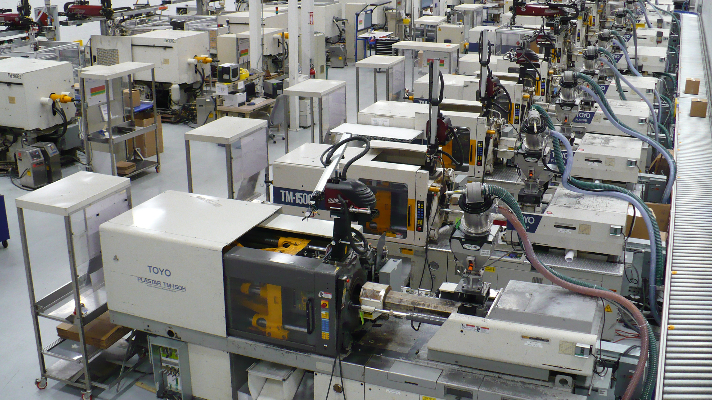Enhancing Item Growth with Advanced Plastic Injection Molding Solutions
Enhancing Item Growth with Advanced Plastic Injection Molding Solutions
Blog Article
Recognizing the Essentials of Plastic Injection Molding Procedures
Plastic injection molding functions as a cornerstone of modern manufacturing, giving a methodical technique to generating complex components with precision. This procedure not just incorporates the fundamental steps of melting and injecting materials right into mold and mildews yet additionally involves a nuanced understanding of various influencing elements, such as temperature level and stress. As sectors significantly require efficiency and quality, the details of this approach end up being much more important. Discovering these crucial elements can disclose just how even small changes can bring about substantial renovations in manufacturing results, increasing concerns regarding the potential for advancement in this recognized process.
What Is Plastic Injection Molding?
Plastic shot molding is a widely made use of manufacturing procedure that changes thermoplastic and thermosetting materials right into precise and complicated forms. This method is preferred for its ability to create high quantities of identical get rid of remarkable precision, making it an important approach in various markets, consisting of automotive, consumer items, and clinical tools.
The process includes thawing the picked plastic material and injecting it into a mold and mildew under high stress. The mold, developed to the requirements of the desired part, enables the liquified plastic to form as it solidifies and cools down. As soon as the product has actually hardened, the mold is opened, and the completed part is expelled.
Plastic shot molding supplies several advantages, including decreased waste, consistency in production, and the ability to integrate detailed layouts that might be testing with other making approaches. In addition, it sustains a wide array of products, each giving unique buildings that can be customized for details applications. As industries proceed to introduce, plastic shot molding stays at the leading edge, allowing the advancement of sophisticated products that meet evolving customer needs.
The Shot Molding Refine
The injection molding process is an innovative technique that involves a number of crucial phases to generate high-grade plastic parts. Plastic pellets are fed right into a heated barrel where they are thawed into a thick liquid. This molten plastic is then infused under high pressure into a precision-engineered mold and mildew, which forms the material right into the wanted type.
Once the mold and mildew is filled up, the plastic is allowed to cool down and strengthen, taking the shape of the mold and mildew dental caries. Air conditioning time is important, as it impacts the cycle time and the last homes of the molded component. After sufficient air conditioning, the mold opens up, and the completed part is expelled using ejector pins.

Products Utilized in Shot Molding
Different products can be used in the injection molding process, each offering distinct buildings that deal with specific applications. The most commonly used products consist of thermoplastics, thermosetting plastics, and elastomers.

Thermosetting plastics, like epoxy and phenolic resins, undertake a chemical change during the curing process, causing a stiff, inflexible framework. These materials are excellent for applications requiring high warm resistance and architectural stability, usually used in electric insulators and auto parts.
Elastomers, consisting of silicone and rubber-based materials, offer versatility and strength. Their unique homes make them ideal for applications that demand elasticity, such as seals and gaskets.
Furthermore, specialized products like bio-based plastics and compounds are gaining traction for their environmental benefits and improved performance attributes, expanding the extent of shot molding applications in numerous sectors. Understanding the residential or commercial properties of my company these materials is vital for picking the ideal kind for details tasks.
Benefits of Shot Molding
Shot molding sticks out as a very effective manufacturing procedure that provides countless benefits for creating complex components with accuracy. Among one of the most substantial advantages is the capability to produce elaborate designs that would be difficult or difficult to achieve with other approaches (Plastic Injection Molding). The procedure enables tight tolerances and detailed attributes, making certain high-grade parts
Furthermore, injection molding is recognized for its fast production abilities, making it a suitable option for high-volume manufacturing. Once the Visit This Link mold and mildew is produced, components can be created rapidly, reducing preparations and enhancing overall performance. This effectiveness not just reduces production expenses but additionally supplies an one-upmanship on the market.
The versatility of products used in shot molding further boosts its appeal. A vast array of thermoplastics and thermosetting polymers can be used, permitting producers to select materials that ideal meet their particular demands, including toughness, warm, and flexibility resistance.
Moreover, the process lessens waste, as excess product can typically be reused and reused. This sustainability element adds to a reduced environmental effect, making shot molding a responsible manufacturing option. On the whole, the advantages of injection molding make it a favored technique for several industries.
Elements Impacting Item Top Quality
While numerous elements can influence item top quality in shot molding, understanding these elements is important for accomplishing optimum outcomes. Secret facets consist of product option, refining criteria, and mold and mildew design.
Material selection plays an important function, as different polymers exhibit distinct buildings that impact flowability, stamina, and thermal security. Inadequate material choice can lead to problems such as warping or incomplete dental filling.
Handling specifications, consisting of temperature, pressure, and cycle time, have to be diligently regulated. Variants in these settings can result in inconsistencies in part measurements and surface finish. For circumstances, exceedingly high temperatures may create destruction of the polymer, while insufficient pressure can cause brief shots.
Mold and mildew style is equally important, as it establishes the circulation of the molten plastic and the cooling process. Inadequately created molds might result in uneven air conditioning rates, causing dimensional mistakes and recurring anxieties.

Final Thought
Finally, plastic shot molding functions as an important production procedure that allows the effective production of premium elements. Mastery of the injection molding procedure, consisting of the understanding of materials and the influence of various factors on item top quality, is necessary for attaining ideal results. The advantages of this approach, such as cost-effectiveness and layout flexibility, further emphasize its value throughout multiple industries, strengthening its condition as a preferred choice for high-volume manufacturing.
Plastic injection molding serves as a keystone of contemporary manufacturing, giving a systematic method to producing intricate components with accuracy.Plastic injection molding offers a number of benefits, including reduced waste, uniformity in production, and the capability to include elaborate designs that might be challenging with various other manufacturing approaches (Plastic Injection Molding). As markets proceed to innovate, plastic shot molding stays at the center, allowing the development of sophisticated items that fulfill advancing consumer needs
The injection molding procedure is a sophisticated method that involves a number of vital stages click this to generate premium plastic parts.In final thought, plastic shot molding serves as an important manufacturing process that makes it possible for the efficient production of high-grade elements.
Report this page